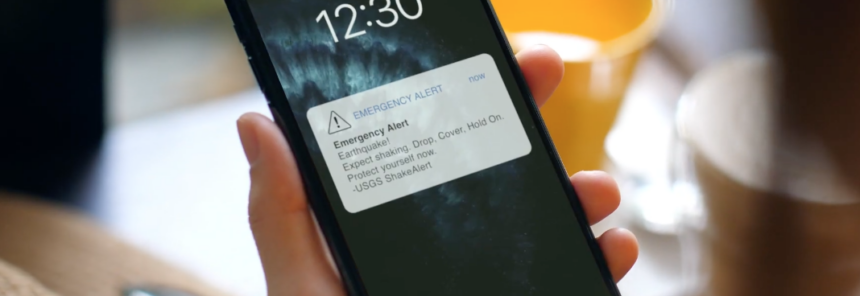Santa Barbara officials say prepare for “the big one” and an earthquake drill is set for this month


SANTA BARBARA COUNTY, Calif. - Just how ready are you for the "Big One," the name linked to an expected massive earthquake some time in the future.
The California Office of Emergency Services is asking you to take earthquakes very seriously. Often we are focused on other disasters, seen annually, like wildland fire, but earthquakes create numerous areas of concerns at different levels, and you are usually not already pre-evacuated into a shelter.
The State is urging earthquake drills, planning and widespread community preparedness this month.
This week a swarm of quakes have been detected in the Salton Sea area of Southern California. Some had a magnitude over 4.5.
Santa Barbara County Emergency Services Director Kelly Hubbard says, "In an earthquake as long as your home is safe to stay in, we want you to stay there, we want you to think about having your resources at home."
History shows we have had devastating, building-crumbling quakes.
In modern times, due to upgraded code requirements, buildings are stronger and so is our local safety net.
Hubbard says, "Neighborhood awareness outreach in a disaster is part of our community resiliency. Being able to be familiar with your neighbor is a vital part of your response."
She encourages you to know where seniors live, that may need help. Or children left at home when their parents are at work.
Responding to needs on your block will help first responders when they arrive with an assessment.
In a major emergency with a number of calls for service that come in, you may not see an emergency responder as fast as you are normally accustomed to.
There are two main reasons why rescue crews could be delayed.
"One is that greater wide impact," says Hubbard. "Also our first responders have the responsibility to do what is called a windshield survey. They go out in the community and they are looking for significant damages."
That leads to an incident command structure and allocation of resources both locally and with regional assistance, if that's possible.
Both first responders and organized community members are already planning ahead.
Hubbard says, "We are working on a joint plan with Ventura County about a transportation concept that may have impacts with the 101 since we are both reliant on it."
During the Thomas Fire and Montecito mudflow disasters, Highway 101 was impacted several times. The California Highway Patrol escorted vehicles through, where possible, especially emergency officials, supplies and medical personnel.
There were also boats that transported personnel back and forth between Santa Barbara and Ventura.
Volunteer pilots took to the air as a shuttle service for doctors and those providing vital services.
A good day to stage your drill is October 15, the annual Great California Shakeout day. That event will take on a new look this year.
Hubbard says, "Whether you are at home working and your kids are home trying to do school, use Oct 15 or any time around there to talk to your kids about earthquake preparedness. Advise where in your home to duck, cover and hold on. Learning how would help your kids know where your resources are and have that family plan."
For alerts, signing up online will get you a choice of a call, text or email.
Your best bet is to get them all.
There is also the MyShake phone App which is part of an early warning system.
For more information go to: Santa Barbara County Office of Emergency Management
California Office of Emergency Services
The Great California Shake Out
The state released this information about the Great California Shakeout Thursday:
Governor's Office of Emergency Services Announces "Don't Get Caught Off Guard" Earthquake Warning Education and Preparedness Campaign
| SACRAMENTO -- The California Governor's Office of Emergency Services (Cal OES) announced today the launch of a public awareness campaign to educate all California residents about California's innovative earthquake warning system -- Earthquake Warning California. The campaign, "Don't Get Caught Off Guard," directs Californians to no-cost tools, resources, and information, including the smartphone MyShake App, Android Earthquake Alerts, Government Wireless Emergency Alerts (WEAs), and the earthquake.ca.gov website. Building upon the success of California's first-in-the-nation earthquake warning system, the "Don't Get Caught Off Guard" education campaign will deliver messages through advertising channels including digital, social media, and broadcast advertising, as well as outreach to community and industry organizations to increase awareness of available technology. The campaign will be sustained through 2022 with an optional one-year extension. "California is proud to have the first statewide earthquake warning system and now to spread the word broadly about this new innovative, life-saving system," said Cal OES Director, Mark Ghilarducci. "Cal OES's leadership facilitated making warnings publically available. The public can now have moments of warning before previously unexpected natural disasters. It is changing the world of mitigation and emergency management." Last year's enacted budget included a $16.3 million one-time General Fund to finish the build-out of the Earthquake Warning California system on the backbone California Integrated Seismic Network (CISN), including finishing seismic station installation, adding GPS stations to the network, and improving telemetry. The CISN provides the ground motion data needed to estimate the magnitude, location and expected shaking of an earthquake and produce a ShakeAlert® warning. California Governor Gavin Newsom's budget this year includes an additional allocation of $17.3 million, supported by a one-time loan of the same amount from the School Land Bank Fund, for full operation and maintenance of the system. The General Fund budget also calls for launching a public education campaign to remind Californians that seconds count when warning mobile device users in the area before the ground starts shaking. The "Don't Get Caught Off Guard" campaign multilingual creative approach uses relatable situations while delivering a serious message encouraging individuals and their families to have tools at the ready to alert them as soon as an earthquake is detected by ground sensors. The broadcast advertising features a combination of humorous, unexpected, and unprompted scenes of real people caught off guard and encourages people to use Earthquake Warning California resources to give them extra time to protect themselves in an earthquake. For example, a :30 second broadcast commercial presents an unsuspecting woman posing for a beach photo suddenly doused by an ocean wave, a child playing a piano teetering off the bench onto the floor, and aman falling through the ceiling at a construction site.In another :15 second segment, a shaken fizzy drink erupts on a young man, and a senior is startled when a butterfly flutters out of a greeting card. The ads and other digital assets can be viewed at the Earthquake Warning California website, earthquake.ca.gov. "Don't Get Caught Off Guard" encourages audiences to learn more about earthquake preparedness by visiting the website, which includes instructions to download the free MyShake App, or enable Android Earthquake Alerts and WEAs on smartphones. The website also provides the opportunity to sign up for ongoing news and information, participate in virtual public presentations, and download industry-specific informational resources. The campaign features statewide advertising delivering messages directed to diverse audiences. Over nearly two years the campaign budgets more than $420,000 for ethnic television (Spanish, Cantonese, Mandarin, and Vietnamese). There is more than $1 million dedicated to general market television advertising. Roughly $2.3 million will be directed at digital advertising, which includes digital, social, and audio streaming. The campaign will also enlist business and civic groups, government agencies, policymakers, charitable institutions, faith-based organizations, and social services to deliver messages to families, staff, members, and followers. Industry and audience-specific toolkits are available for download in multiple languages on the Earthquake Warning California website. The announcement comes in advance of the Great California ShakeOut and International ShakeOut Day, which takes place on Thursday, October 15. Following COVID-19 health and safety guidelines, organizations such as schools and employers, as well as individual families, are encouraged to hold a ShakeOut drill on or around October 15. Last year, 10.8 million California residents participated in the Great California ShakeOut. "Through broad messaging and targeted outreach launching in October, we believe organizations in all parts of the state will be motivated to help millions of residents take earthquake preparedness steps," said Ghilarducci. "Education, utilities, first responders, public safety, transportation and others can play a vital role in preventing injuries and minimizing the risk of other hazards in the case of the next Big One." "Through broad messaging and targeted outreach launching in October, we believe organizations in all parts of the state will be motivated to help millions of residents take earthquake preparedness steps," said Ghilarducci. "Education, utilities, first responders, public safety, transportation and others can play a vital role in preventing injuries and minimizing the risk of other hazards in the case of the next Big One."Background on Earthquake Warning CaliforniaLast October, on the 30th anniversary of the Loma Prieta earthquake, Governor Newsom announced the launch of the nation's first statewide Earthquake Early Warning System, now named Earthquake Warning California. Earthquake Warning California utilizes CISN, which is a partnership between Cal OES, United States Geological Survey (USGS), UC Berkeley, the California Institute of Technology, and the California Geological Survey. The system uses ground-motion sensors to detect earthquakes that have already started and estimates their size, location, and impact. When it detects a significant magnitude, the system issues a ShakeAlert® Message, providing a warning before shaking begins. Earthquake Warning California marries the MyShake App and Android Earthquake Alerts with traditional warning delivery methods such as WEAs. The MyShake App has been downloaded more than one million times since being publicly launched in 2019. In addition, Cal OES recently announced a partnership with Google that includes Earthquake Warning California technology as a feature included in millions of new Android phones and via software updates in existing Android phones used in California. Earthquake-prone countries like Mexico and Japan have long had earthquake warning systems, with warnings typically delivered through cell phones or public address systems. However, California is the first in the U.S. to offer a statewide earthquake warning system. Governor Newsom and the Legislature made significant investments to fund disaster planning and preparedness - including Earthquake Warning California - in the 2019 Budget Act. To learn more about earthquake preparedness, the MyShake App, WEAs, Android Earthquake Alerts, and the latest earthquake warning news and information, visit: earthquake.ca.gov. |
